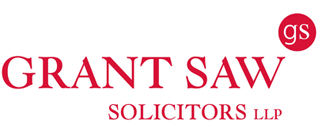Cheaper registration fees are an opportunity for small businesses and designers to secure greater protection for their intellectual property in future, as well as being a route to protection in the UK post-Brexit.
It protects the visual appearance of a product including the shape, texture, materials, colour and pattern and gives the right to prevent others from using the design for up to 25 years through a renewal process every five years. And since the Intellectual Property Act was introduced two years ago, it has been a criminal offence to copy a registered design intentionally.
The reduction in fees for registered designs sees the cost of a single online application cut by £10 to £50, with bigger savings for multiple applications. An application containing 2-10 designs will cost £70, and each extra block of up to 10 designs an additional £20. The savings are huge for multiple design registrations: as an example, a batch of 40 designs registered online will cost £130 under the new system, compared to £1620 under the old fee rates.
Said litigation expert, Bimal Kotecha of Grant Saw solicitors: “This reduction opens the door to much more affordable protection for small businesses seeking to safeguard their business ideas and designs. They can more easily afford to register different options, such as line drawings, coloured drawings and photographs, which could boost their chances in challenging any copycat competitor.”
He added: “The recent ruling by the Supreme Court, which saw the designer of children’s sit-on suitcase Trunki lose their infringement case against the cheap look-alike Kiddee case, has highlighted the need for a more comprehensive approach to registration of designs”.
The Trunki design was protected with six computer-aided design drawing representations of the exterior of the case from various angles and perspectives. The Supreme Court ruling pointed to the lack of ornamentation on the surface of the Trunki as depicted in the registration, and how this differed from the decoration present on the body of the Kiddee case.
“The Trunki design had been registered under the EU Registered Community Design process, but the outcome of the case translates directly to the UK design registration process,” explained Bimal. “And the lesson is to safeguard your designs with multiple depictions and types of image to give maximum protection.”
The UK process protects designs solely in the UK, so for businesses looking to protect designs in Europe the EU Trade Marks (EUTM) and Registered Community Designs (RCD) will continue to be valid in both the UK and the rest of the EU until Brexit is completed. Post Brexit, UK businesses will still be able to register a Community Design, which will cover all remaining EU Member States, but it will not be valid in the UK.
Also, the government has said it intends to ratify the The Hague System for the International Registration of Industrial Design in a national capacity, to enable continued access for UK designers post Brexit. This allows registration of up to 100 designs in over 65 territories through one single international application.
Bimal added: “In the run-up to Brexit, it’s important that businesses consider their options for both new or existing design registrations, as to whether they need to protect their design in either the UK and Europe, or in both.”
PMS International Group Plc v Magmatic Limited [2016] UKSC 12 (“Trunki”)
http://www.legislation.gov.uk/ukpga/2014/18/contents
https://www.gov.uk/register-a-design
https://www.gov.uk/government/news/good-news-for-designers
https://www.gov.uk/government/news/ip-and-brexit-the-facts
https://www.supremecourt.uk/cases/docs/uksc-2014-0147-judgment.pdf
This is not legal advice; it is intended to provide information of general interest about current legal issues.


